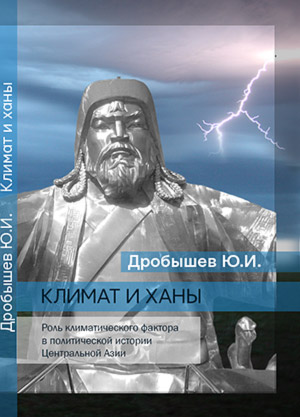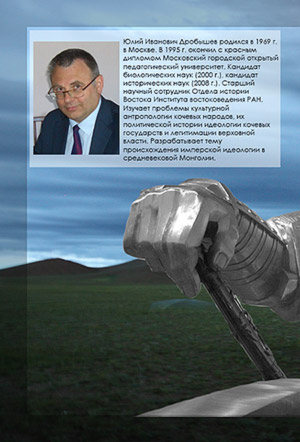Книга
 Климат и ханы: Роль климатического фактора в политической истории Центральной Азии
Климат и ханы: Роль климатического фактора в политической истории Центральной Азии
 Климат и ханы: Роль климатического фактора в политической истории Центральной Азии
Климат и ханы: Роль климатического фактора в политической истории Центральной Азии

Дробышев Юлий Иванович
Москва, 2018, 264 стр.
Монография посвящена роли климатического фактора в жизни и политической истории кочевых народов Центральной Азии, тесно связанного с понятием сакрального характера верховной власти. Показано, как погода решала судьбу военных столкновений, и как люди пытались ставить ее себе на службу при помощи специальных магических камней. Особое внимание уделяется раскрытию космологических идей, не только облекавших ханов властью над своими подданными, но и делавших их ответственными за гармоничное состояние всего Универсума.
English version
The content of the book is built around various weather and climate events that have provided both direct and indirect impact on the livelihoods of nomads of Inner Asia since antiquity to the present day. Due to their long repeatability, expressed, primarily, in the change of seasons with their Inner Asian specificity (extreme emperatures, droughts, etc.), these phenomena are largely responsible for material and spiritual development of nomadic civilization, but because of their inherent dynamism, they were widely used in the interpretation of the will of Heaven. Favorable weather situation was associated with the presence at the pinnacle of power a ruler who was acceptable for the Sky; unfavorable one, espectively, pointed to reign of an illegal khan. This was the source of certain political decisions. Lords of the steppes acted as vital mediators between Eternal Heaven and Earth for a human society and the environment.
The logic of materials’ presentation follows from the naturalscience description of modern climatic conditions in Inner Asia to the disclosure of cosmological ideas, which not only endowed khans with power over their subjects, but also made them responsible for harmonious state of the whole Universe. Attempts are made to find out whether these views were native for the nomadic culture or something could be borrowed from China. In the book there is also a place for entirely “down to earth” information about the role of climate and other natural factors in the ethnography of Mongolian and Turkic peoples of Inner Asia, and in the history of nomadic empires. Numerous examples show how the weather decided a fate of military conflicts, and how people tried to put it on service, attacking the enemy with cold, rain, and snow with the help of special magical stones “yada tash”. In some cases, the polyphony of sources made it possible to examine the same historical event from different sides and to see “war of legitimacies” behind debates about the supreme power, where the environment acts as active force or, more precisely, the Eternal Sky, which embodies the Supreme Law is the principal agent of history.
Содержание
Введение ..... 6
Глава I
Климат и природные условия Центральной Азии .....9
Глава II
Адаптация материальной и духовной культуры номадов к климату .....24
Глава III
Климат в исторических событиях .....43
Глава IV
Погодные явления как орудие .....86
Глава V
Природные явления и легитимация верховной власти ..... 133
Глава VI
«Инцидент Туму» 1449 г.: знамения и война легитимностей ..... 194
Заключение ..... 231
Библиография ..... 235
Summary ..... 255
Приложение .....257



